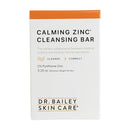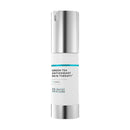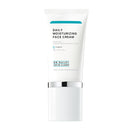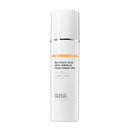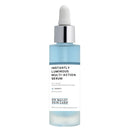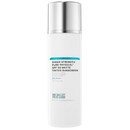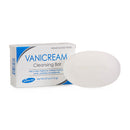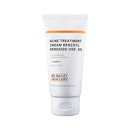The Cause of Varicose Veins and Doctor's 5 Tips to Prevent Them

The cause of varicose veins is part genetics and part lifestyle. Most people don't think about their leg veins until they see the first varicose vein or spider vein. Varicose veins are frustrating, they get worse over time, and are embarrassing. If you are prone to them, it's important to take good care of your leg veins to slow the development of varicose veins. It's never too late to take steps to prevent them from getting worse in the future.
Varicose veins of the legs are caused by leaky leg vein valves.
I like to explain leg veins by analogizing them to an upside-down tree. The smaller and outer tree branches are the surface capillaries under the skin. These become spider veins.
Just like the way tree twigs lead to larger and larger branches, your superficial capillaries lead to larger veins. They eventually drain into the large vein in the center of your abdomen and then back to your heart.
All the moderate to large size veins of your legs, which would be like the larger limbs on a tree, have one-way valves. Damage to these valves cause varicose and spider veins!
The one-way valves in your leg veins open when your leg muscles contract to let blood pass up the veins towards your heart. They snap closed to prevent the blood from falling back down your leg to your feet. It is the muscular contraction that effectively ‘milks’ the blood up your leg veins and back into your body.
It is surprising to realize that the pumping of your heart is too weak to move blood way out in your leg veins.
Your heart can move blood into the arteries of your legs, which you feel as a pulse in an artery. Blood in your leg arteries must go through your leg's skin capillaries before passing into your leg veins. The strong pulsing pressure you can feel in your arteries weakens as the blood flows into the capillary network. This means that your leg veins depend on your leg muscles to get the blood out of your leg veins.
Varicose veins happen because the valves aren’t that strong and they can break. When this happens, more blood pools above the valve below in your vein. Pooled blood is heavy and the little valves just can’t hold it all up. Once one valve breaks there is an even heavier amount of blood on the valve below it, so it breaks too.
What causes spider leg veins?
Spider veins form when heavy pooled blood in the veins builds up pressure and gets pushed out into the capillary network.
What causes large varicose veins?
Varicose veins happen when many of the one-way valves in a vein are broken. When this happens in large veins, they swell outwards and you can see and feel them as the lumpy ropes and cords of varicose veins that can run up and down your legs. Because our bodies don’t make new valves in the veins, this problem becomes permanent. Some people have stronger veins and valves than others.
5 Tips to help you prevent varicose veins if you’re prone to them?
- Keep your legs moving when you’re standing or sitting. Contraction of your leg muscles ‘milks’ the blood up and out of your leg veins. Get up and walk, rise up on your toes numerous times, circle your ankles-anything to contract your leg muscles. The more the better!
- Elevate your legs for 5 minutes or so, getting them above your hips, or even better, your heart after prolonged standing or sitting. This allows pooled blood to drain out of the capillaries and veins.
- Wear compression hose if you must stand or sit immobile for long periods of time. This is especially important for you if you work on your feet, like nurses, waitresses, cashiers etc. It’s also important for all of us when we travel and are stuck sitting for hours. Ideally, I tell my patients to wear waist high support hose that provide 25mm Hg (the measure of how tight they are). (Some people should not wear support hose. Talk with your doctor to see if support hose are safe for you to use.) Many of my patients ask me if it's ok to just wear knee high hose, but leg vein valve damage can occur as high up as the groin so I tell my patients to use waist high products.
-
Do exercises that buildup the size of your leg muscles. This helps to maximize your leg muscles ability to ‘milk’ the blood you of your legs. This means:

- Work-out to get big, fit leg muscles. Good exercise options include walking and squats. Join a gym and ask them to give you exercises that give you kind of fit, firm muscles that make for big contractions with every leg movement during the day.
- Wear flat shoes. Unfortunately, high heels shorten the leg muscles and interfere with efficient contractile ‘milking’ of the leg veins. As often as possible, wear flats.
- Avoid constricting your leg veins. Think of a leg veins like a garden hose; if you kink the hose water can’t flow. Your leg vein blood will have a hard time flowing up and out of your leg if you constrict the vein by crossing your legs or wearing constricting stockings that bind and ‘cut into’ the leg, effectively putting a ‘kink in your hose’. If your blood can’t flow out of your legs, it pools leading to valve damage and varicose veins.
Can you get varicose veins from a leg injury?
Yes, varicose veins can also occur if you’ve had an injury or surgery that damaged your leg veins in a way that prevented blood from passing freely up your legs. A strong impact, like falling on your legs, or being hit hard on your legs can cause the blood in your veins to flow backwards, permanently damaging the one-way valves.
How are leg veins treated?
Spider and varicose veins can be treated. Some veins can be injected with harsh fluids to damage the veins so that the body absorbs them. It's called sclerotherapy. In my opinion, this is the treatment of choice for the smaller spider veins and for some of the larger varicose veins. There are also laser and surgical treatments for varicose veins. Leg vein treatments are tricky though so it’s best to find an expert physician that does a lot of cases and has a low incidence of side effects.
No matter how frustrating your leg veins are, your leg skin will always look and feel nicer if you use a glycolic acid skin care routine. Glycolic acid helps exfoliate skin so that it is smooth and polished. This AHA also helps stimulate your skin to make more hyaluronic acid inside of your skin to give it a more youthful and dewy look and feel.
I use my Ultra-Fast Triple Action Body Smoothing Kit to keep my leg skin looking nice at a tender 64 years young. I've done this for over 30 years and know it makes a huge difference. I use the products in this kit at least twice a week. When not using the Glycolic Acid Body Lotion, I apply my Natural Face, Hand and Body Lotion to my legs.
The bottom line with skin care for varicose veins:
Always apply a deeply hydrating moisturizer after every bath or shower to help prevent venous stasis dermatitis, which is an itchy and serious rash due to sluggish leg vein drainage.
In the summer, I apply a good self-tanner under the glycolic acid. My favorite is Avene Self-Tanner under the Glycolic Acid Body Lotion when I'm wearing shorts. It's a light texture and not too heavy to apply under the Glycolic Lotion.
I'm genetically prone to varicose veins. My mom and my paternal grandmother both had extensive large varicose veins and tons of spider veins. They were both really embarrassed by their leg and the veins ached too. I've done all the preventative steps that I listed above. It works and there is hope!


